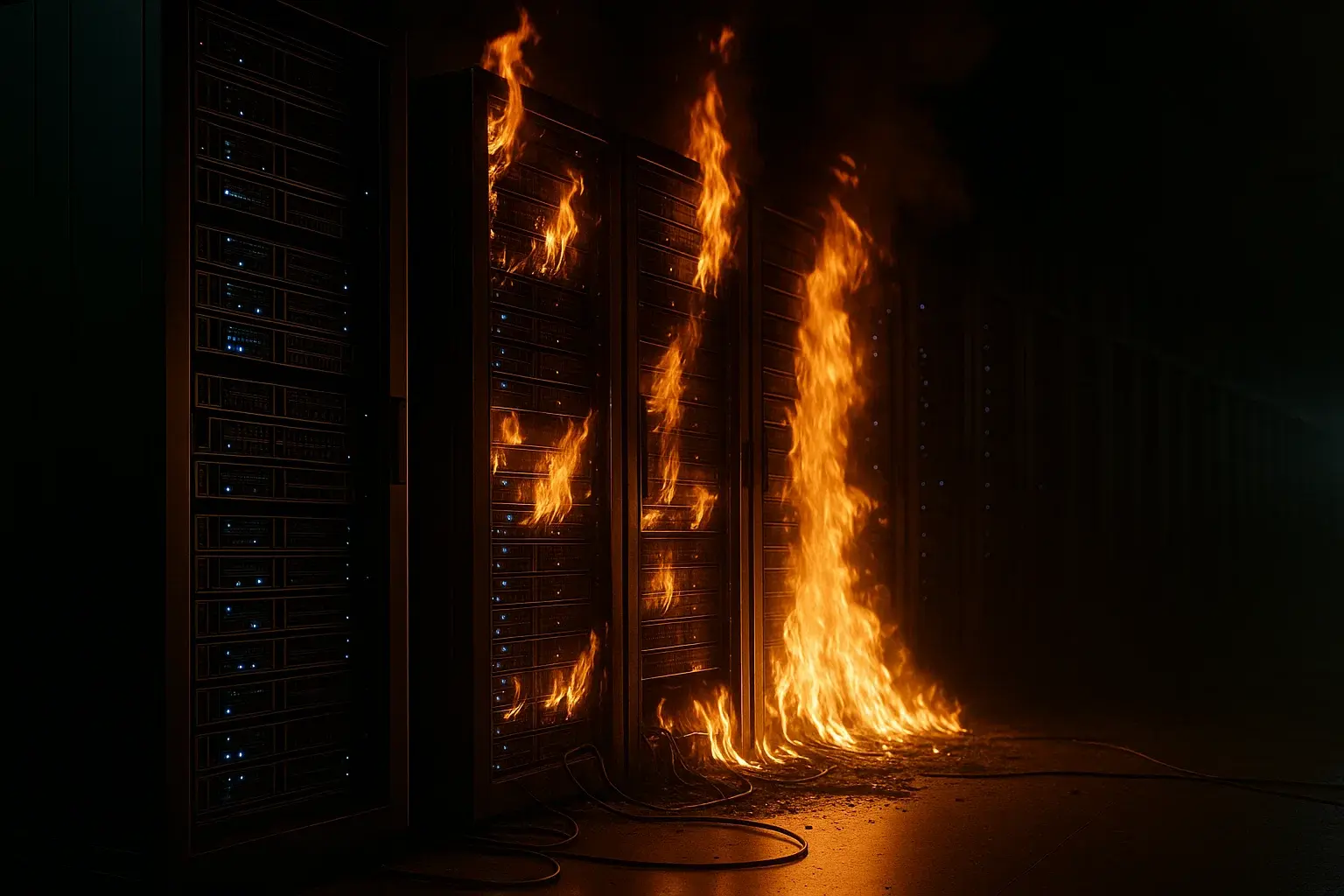On September 26, 2025, South Korea experienced one of the worst digital disasters in its history. A fire destroyed an entire data center belonging to the National Information Resources Service (NIRS), permanently erasing 878 terabytes of official data.
The most tragic part wasn’t the flames—but the fact that no backups existed. In just hours, eight years of government data vanished forever.
The catastrophe also had a human toll: one employee, overwhelmed with guilt after spending the night battling the fire, took his own life the following day.
How the Tragedy Started
The incident occurred at the NIRS headquarters in Daejeon, south of Seoul. During a maintenance operation, technicians moved lithium-ion batteries to reorganize part of the electrical system.
Fourteen minutes later, one battery exploded, sparking a massive fire that rapidly consumed the entire facility.
Fortunately, the blast happened after the technicians had stepped away, avoiding an even bigger tragedy. Still, the blaze reduced all servers to ashes, leaving behind a data graveyard.
When the smoke cleared, emergency crews discovered the extent of the loss: 878 TB of critical data, gone forever, with no backup.
What Was Lost?
The system affected—G-Drive (Government Drive)—was the South Korean government’s official cloud platform for managing public records.
It stored:
- Data from 125,000 civil servants
- Files from 163 government services
- Import/export certificates
- Product safety records
- Internal communications and official emails
In short, this was the digital backbone of South Korea’s public administration.
Learn more: What is a hybrid cloud backup and how does it work?
The Fatal Error: No Backups
What shocked the public most was that such a vital government data center had no proper backups.
According to The Chosun Daily, only 62% of the NIRS systems were backed up daily, while the other 38% were only backed up monthly.
Even worse: the 878 TB of lost data had no local or remote backups at all.
The government’s official justification?
“The system was too large to fully back up.”
The response sparked nationwide outrage—especially since 95 other systems at the same center did have backups and were at least partially restored.
A Month Later: Chaos Continues
Nearly a month after the fire, only 20% of the government’s digital services have been restored.
Thousands of people remain affected:
- Officials still lack access to email
- Many tax and administrative services remain frozen
Recovery teams are using old copies and manual reconstruction techniques to retrieve what they can—but most of the data is permanently lost.
As one civil servant put it:
“Eight years of work, completely gone.”
When a Digital Mistake Wipes Out a Nation
The NIRS disaster proves an uncomfortable truth: a lack of backup culture is just as dangerous as a cyberattack.
At TecnetOne, we repeat this often:
No backup = No cybersecurity.
You can have firewalls, encryption, multi-factor authentication, and access controls—but without backups, everything can vanish in minutes.
South Korea's case is a global wake-up call. No infrastructure—no matter how advanced—is immune to human error, fire, or power failure.
The Cost of Skipping Backup Plans
Maintaining redundant systems isn’t cheap. But the cost of not doing it is catastrophic.
The NIRS disaster resulted in:
- Loss of historical and administrative data
- Massive service interruptions
- Public distrust toward the government
- Psychological toll on responsible personnel
Local media even demanded the resignation of the Minister of Technology and NIRS Director, calling the incident “an unforgivable act of negligence.”
What Should Have Been Done?
At TecnetOne, we recommend the 3-2-1 backup strategy, a gold standard in cybersecurity:
- 3 copies of data: one original + two backups
- 2 different storage types: e.g., cloud + physical server
- 1 copy stored offsite: for fire/flood recovery
We also advise using immutable backups (cannot be altered or encrypted) and conducting regular recovery tests to ensure data can be restored quickly.
The goal isn’t just to store data—but to ensure continuity.
Similar titles: What are Backup Recovery Tests?
The Human Cost of a Digital Failure
Beyond technical issues, this tragedy highlighted the emotional pressure on IT teams.
The suicide of the NIRS employee, just hours after the fire, reflects the immense burden of responsibility many professionals carry.
That’s why digital resilience must also include human resilience. Clear protocols, emotional support, and a culture of prevention—not blame—are essential.
A Global Lesson in Digital Fragility
This wasn’t an isolated case. Similar data center disasters have occurred at:
- OVH (France)
- AWS (USA)
- OVHcloud (Germany)
Each incident proves the same point: the cloud is not infallible. Every platform depends on physical servers—vulnerable to fire, power loss, or human error.
True security isn’t just about technology—it’s about planning, discipline, and a prevention-first mindset.
Final Thought: No Backup, No Digital Future
The NIRS fire will go down as a tragic example of what happens when security is taken for granted.
Eight years of national data were lost because someone decided backing up was “too big or too expensive.”
The message is clear: digital transformation is meaningless without strong backup and disaster recovery strategies.
At TecnetOne, we help companies and public institutions build digital resilience—so that one mistake, fire, or attack won’t erase years of progress.


